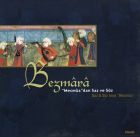Buy or gift a stand-alone digital subscription and get unlimited access to dozens of back issues for just £18.99 / $18.99 a year.
Please register at www.exacteditions.com/digital/cornucopia with your subscriber account number or contact subscriptions@cornucopia.net
Buy a digital subscription Go to the Digital EditionTim Stanley on Nurhan Atasoy’s new tour de force on Ottoman art and artefacts in Europe
This book is an impressive encyclopedia of the ways in which Ottoman material culture is reflected in the objects and images produced in the parts of Europe that did not fall under direct Ottoman control. The period it covers runs from the conquest of Constantinople by Mehmet II in 1453 to the end of the War of the Holy League in 1699, when Ottoman military expansion on its European frontiers ceased for good, and the Europeans lost their awe of the Ottomans. The book’s impact is vivid and immediate thanks to its 400 colour illustrations of high quality. These would be a useful resource if the authors had merely brought together what was already known, but they are a good deal better than that.
Nurhan Atasoy’s voyages of discovery in Europe are already known to us through İpek, the superb survey of Ottoman silk textiles she led to publication in 2001. Now they have delivered another swathe of material, much of it new, and, for me at least, exciting. Lâle Uluç’s contribution is also very evident. As in her work on Shirazi painting in Turkish collections, she has helped bring order and argument to an enormous body of material.
In the 250 years the book surveys, a variety of European attitudes developed. The cover shows a detail of a piece of red velvet embroidered and worked in appliqué with the funerary portrait of Ieremia Movila, ruler of Moldavia, who died in 1606; it comes from his tomb in the monastery of Sucevita, of which he was a founder. Ieremia wears a boldly patterned Ottoman kaftan over a robe of real seraser, or cloth of silver, and is shown flanked by cypress trees growing in beds of tulips and carnations. The Latin-style arms remind us that he was a Polish as well as an Ottoman vassal. But hybrid as this portrait may be, the use of Ottoman elements reflects the everyday reality of Ieremia’s relations with his Turkish suzerains. It all makes sense.
A very different impression is left by a dramatic portrait of the Dutch merchant Nicolas de Respaigne, painted after he returned home from Venice, where we assume he was engaged in trade with the Ottomans. Here we enter the world of high art, for the portrait is by Peter Paul Rubens. Unlike Ieremia Movila, de Respaigne had no regular, direct relationship with the Ottoman authorities. There is no sense of serious intent, of power being exerted. It is a bourgeois exercise in fancy dress, a display of wealth and a certain sophistication cobbled together by someone with access to carpets and felt caps. Sitter and artist show no real sign of understanding the Ottomans, or caring. They simply thought Ottoman things were pretty.
One image in the book, a rare snap rather than a professional photograph, has a special relevance for me. In 1989, I took an opera tour to Bulgaria. It was a disaster. Balkanturist were so desperate for Western currency that they lied about everything – not a single opera was performed in any house in Bulgaria while we were there, and we had to watch terrible ballets. Even more upsetting were the noises coming from the radio in my hotel room, with the dictator Todor Zhivkov ranting about istoricheskite fakti – the very falsehoods he used to justify forcing the Turks in Bulgaria to adopt Christian names. And my best friend in Bulgaria was annoyed with me because I had not thought to bring her a copy of The Satanic Verses, which was banned there.
But the tour included a visit to the Rila Monastery, high in the mountains, and in the museum there I saw an altar frontal made of Ottoman velvet of an early date. I was able to tell Nurhan about it later, when she began her search for Ottoman textiles in Europe. The illustration of one of the frontals from Rila in this book is the only positive outcome of my terrible trip.
Tim Stanley is senior curator for the Middle East at the Victoria and Albert Museum
Rather than follow the crowd and dismiss Ankara as a dull, soulless modern capital, says Patricia Daunt, visitors should take time to discover why the famed Angora of old, twice capital in ancient times, is back on the map.
Over the past decade Turkey’s wine industry has come of age. It is now more than ready to join the grown-ups of the wine-producing world. Kevin Gould and the Cornucopia team pick the best of a sparkling bunch. Photographs by Berrin Torolsan.
Cornucopia’s self-guided wine tours
The First Balkan War, a hundred years ago, is an obscure affair, overshadowed by the First World War that followed. But it ended the Ottoman Empire in Europe and came close to ending Turkey itself. It left almost half a million refugees and three times as many dead. David Barchard tells the story of a catastrophic conflict
With a taste for adventure Indiana Jones would appreciate, the Dutch architectural historian Machiel Kiel has risked life and limb in his mission to expose the annihilation of Ottoman monuments in the Balkans. The art historian Holta Vrioni pays tribute to his work and exploits
When Amsterdam’s renovated Rijksmuseum reopens in 2013, the public will be able to visit the Turkish Cabinet of Cornelis Calkoen, the Dutch republic’s ambassador to Istanbul from 1727 to 1744. For more than a century now the museum has been the keeper of his collection of paintings.
‘Never swim before the first watermelon rind falls into the water,’ goes an old Istanbul saying. By the time they ripen, the sea will have reached just the right temperature for swimming.
She was born to be a New York society beauty, but the late Josephine Powell’s chosen world was that of the Anatolian Nomad. Five years after her death, her archive of photographs recording old Anatolia in all its glory will see the light of day in Istanbul
As Turkey and the Netherlands celebrate
400 years of fruitful trade with a series of spectacular exhibitions in both countries, Philip Mansel, author of a new history of the Levant, reflects on the curious role of the Dutch at the Sublime Porte
Not far from the World Heritage city of Safranbolu lies the quiet village of Yörük Köyü, once famed for its valiant cavalry. Berrin Torolsan continues her series on Anatolia’s country houses with a visit to the Sipahioğlu Konak, a beautifully built mansion of satisfying simplicity and unassuming flair.

Aziz Şenol Filiz and Birol Yayla

Bezmärä Ensemble

Cornucopia works in partnership with the digital publishing platform Exact Editions to offer individual and institutional subscribers unlimited access to a searchable archive of fascinating back issues and every newly published issue. The digital edition of Cornucopia is available cross-platform on web, iOS and Android and offers a comprehensive search function, allowing the title’s cultural content to be delved into at the touch of a button.
Digital Subscription: £18.99 / $18.99 (1 year)
Subscribe now